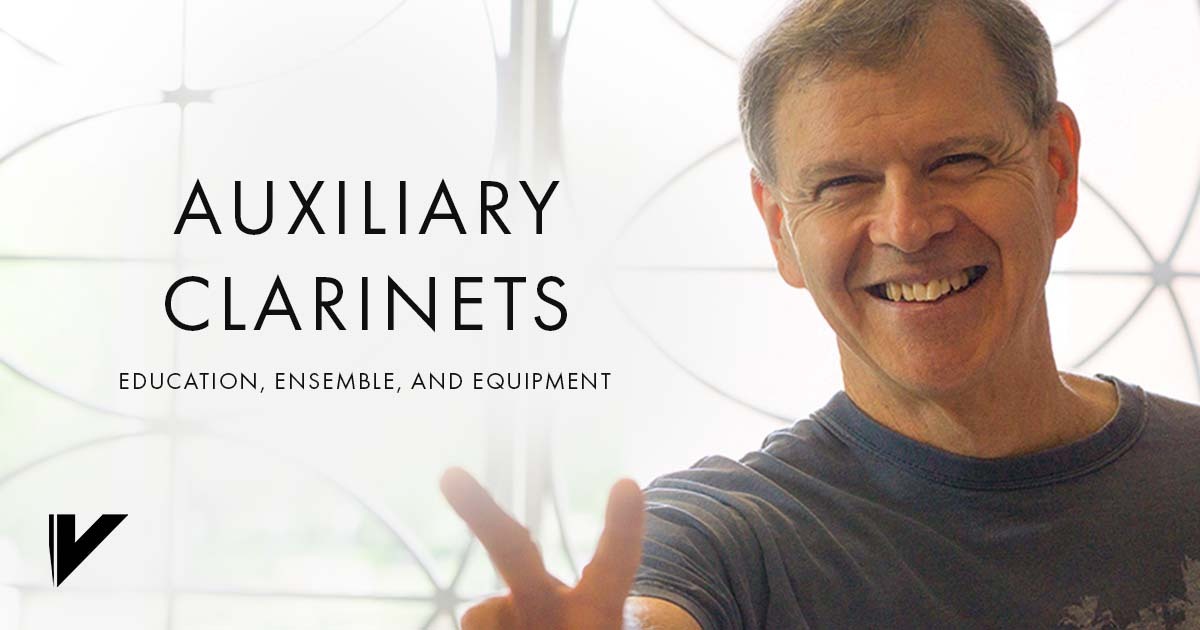Auxiliary Clarinets: Education, Ensemble, and Equipment with Jim Moffitt
Date Posted: May 03, 2016

VandorenUSA: How do you choose equipment for the auxiliary instruments?
Jim Moffitt: When looking for an instrument, I will always go with the top-of-the-line instruments and talk with the musicians who play them, to see what their opinions are of each brand.
Mouthpieces are also crucial and since I’ve started playing, Vandoren has been the most consistent and always of the highest quality, so I always go there first. This is especially true if one is beginning on an auxiliary clarinet. It’s much easier to start with the Vandoren mouthpieces since they are so consistent and make such a big difference. On Eb, theB44 mouthpiece was standard when I started. Now I like the B40and M30 mouthpieces.
Do you choose equipment for auxiliary instruments based on the primary instrument you are currently playing? Ex: using similar length, facing, and tip opening as your Bb clarinet mouthpiece?
JM: I choose equipment based on what works for me on each instrument. I started on the bass and Eb clarinet on my own, without any formal instruction. Once I began working with teachers on each instrument and getting more experience, I began to see what direction I should go with for mouthpieces.
With Vandoren mouthpieces, if you want to try something slightly different to see if it will work better for you, there are many quality choices available in their offerings that help eliminate the hassle.
"I choose equipment based on what works for me on each instrument." - Jim Moffitt
Do you feel auxiliary instruments have improved your listening to the “inner voices” within an ensemble?
JM: Certainly. Whatever position you play, you have to relate to other variables and other musicians depending on the repertoire. When I first played second clarinet, I quickly realized that I sometimes had to work closer with different instruments than when I played first clarinet. On Eb, you frequently play a lot with the piccolo, who usually sits right in front of you, which is a big help. On bass clarinet, it’s often with the bassoons and low horns. All of my teachers taught me the importance of tuning or building chords from the bottom up, so I learned that the bottom voices were very important. That helped me to be aware of the other voices.
What have you learned in the education field about auxiliary instruments?
JM: It is so important that school instruments are kept in working condition. I’ve found that auxiliary clarinets, especially bass clarinets, have a tendency to not always be kept in workable condition. I know it’s often difficult to do this, because of limited resources, but it can make a big difference in a student’s experience. I once coached a high school clarinet sectional and the bass clarinetist was having major problems. He was squeaking frequently and couldn’t play simple passages. The other students said that he was a bad player and he believed it. I tried his bass and it was in terrible condition – I could barely get a sound out of it. I let him try mine and his problems disappeared. The other students were amazed and told him he now sounded great. Seeing the change in his self-esteem was the most gratifying thing.
Any quick tips for Eb and Bass?
JM: I just tried to get as familiar with the tendencies of each instrument as I could so I could know how each of them might react or respond in a certain situation. Other clarinetists might have different suggestions, but that is what worked best for me.